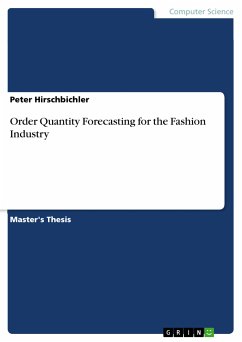Master's Thesis from the year 2010 in the subject Computer Science - Applied, grade: 1, Fachhochschule Salzburg (Information Technology und Systems Management), language: English, abstract: Precise order quantity forecasting for fashion retailers is difficult, because of the specific nature of fashion products namely long lead times, seasonality, and product attributes such as sizes, colours, and cuts. This thesis contributes to order quantity forecasting for fashion products by the use of regression analysis. For this purpose, forecasting techniques in general, and parametric as well as nonparametric regression analysis in articular are presented. This is followed by fundamentals of data mining, specifically data preprocessing and data warehousing, in order to be able to apply regression analysis on historical sales data. Furthermore, to examine the quality of forecasts a method for evaluating the economical benefit of order quantity forecasting was developed. As a next step, the presented methods for forecasting were applied to historical sales data. Therefore, sales data was analysed, regression models were applied and forecasts were calculated and evaluated finally. This thesis is concluded by suggesting a forecasting implementation and by discussing the contributions to order quantity forecasting.

